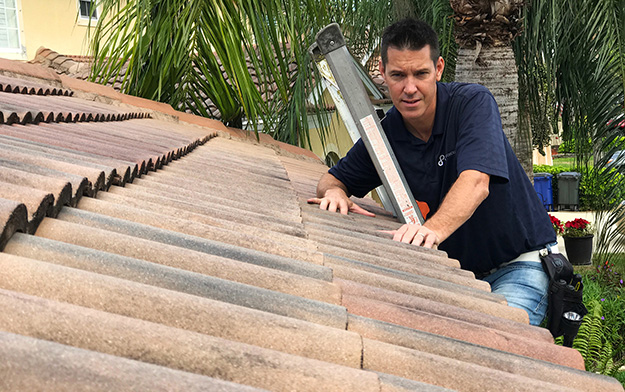What is a 4 point inspection and why do I need one?
A 4 Point Inspection is required by almost every insurance company before they will consider writing a policy for any home that is typically older than 30 years. There are some insurance companies that require this for homes that are also less than 30 years old. The insurance companies are obviously trying to avoid writing a policy for any home that poses a threat for a potential claim that could have been prevented through the identification of the problem through a 4 Point Inspection. The 4 points of this inspection are as follows.
- The roof must typically show a minimum of 3 to 5 years of remaining life expectancy. The insurance companies want to know if any part of the roof is compromised or leaking. They want to know if this roof is already compromised or if it is highly vulnerable to the next wind storm. Other companies require at least 5 years of remaining life expectancy. Your individual insurance agent can give you further details based on potential requirements for the specific carriers that they are shopping on your behalf.
- The plumbing is also a part of the 4-point inspection. The obvious threat of compromised plumbing is water damage to the home. Some pipes pose greater threats than others to a home. It's is not uncommon for older copper pipes to begin pitting and corroding. Pitting and corroded plumbing will eventually lead to the leaking of these pipes. There are other conditions and types of defective pipes that pose threats to future potential claims. Polybutylene is a plastic grey colored pipe that is typically installed with brass or plastic fitting that connect the pipes to each other. These pipes have a history of leaking and many insurance companies will require that they be updated before they are willing to write a home owners policy. Pictures of the plumbing are required at virtually every plumbing fixture to identify the condition of the shut off valves. It is important to the insurance company to know that the plumbing is not vulnerable and does not pose an imminent threat of potential liability.
- The electrical system is another important part of this inspection. The insurance companies are obviously concerned about the threat of fire and safety. Some electrical panels have had lawsuits as their circuit breakers did not properly perform as designed which have caused damage and grave injuries. Electrical fuse panels are also no longer acceptable by most of the insurance industry. Fuses are very dated and the sheer age of systems such as this pose a threat to the safety of individuals and a concern for the home. There are many other electrical safety concerns that we look for from the type of wires to the carelessness in which some work was performed. Our goal is not to become a hurdle for you to get insurance, but it is our desire to identify these concerns in order to protect both you, your home as well the insurance company.
- The heating venting and air conditioning system is the last component to this inspection. The biggest threat or liability from the HVAC system is typically the overflow of condensation from an air handler. The age of this system does not seem to be a factor in the qualification of binding a policy, but the condition of the system needs to be satisfactory. It is not uncommon for us to evaluate an air handler that is at the verge of overflowing with water from the condensation over flow pan. The HVAC system probably poses the weakest threat of the four components evaluated, but is non-the less the fourth and final item evaluated during the 4 Point Inspection.
This explanation is only intended to be a summary to help the consumer understand the intent and reasoning of this inspection. |













